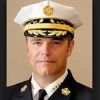I’m sure you will join me in sending our collective thoughts and prayers to Firefighter Ayotte, his family, friends and the West Crescent (N.Y.) Fire Department.
This story and others recently, including a firefighter tragically killed in an apparatus backing accident, reinforces the many dangers of responding along roadways of all kinds — from parking areas and surface streets, to elevated highways and byways.
Beyond the constant need to be aware of, and protect ourselves from, passing traffic, every vehicle on an incident scene poses a potential threat to both responders and bystanders.
I vividly remember my own close call when, while responding to a multiple-casualty incident on an icy highway bridge, I was barely able to stop my vehicle when approaching (sliding into, actually) the scene.
On the very same call I was almost hit by a responding wrecker that encountered the same icing conditions and I was faced with the unpalatable option of jumping over the bridge rail onto the railroad tracks below. Fortunately, the sliding tow truck bumped into one of the crashed vehicles and ground to a halt before I had to make my decision.
Some states, regions, and local jurisdictions have adopted formal traffic incident management systems (TIMS) specifying roles and responsibilities for highway incidents. Regardless, law enforcement agencies, fire departments and our roadway response partners have a shared responsibility for incident scene safety. It’s important to plan, train, communicate and exercise with everyone working on these potentially dangerous scenes.
Stay safe.












